Jeremy Anderson unveils ceramics inspired by industrial architecture
The co-founder of Apparatus, Jeremy Anderson, reveals his first body of ceramic work, inspired by the black and white photographs of Bernd and Hilla Becher depicting water towers and other industrial structures

For the past eight years, the lighting and design studio Apparatus has doled out continual helpings of refinement and glamour upon the New York design scene. The studio’s founders, Gabriel Hendifar and Jeremy Anderson – partners in both life and business – are not only responsible for producing an enviably cohesive collection of lighting, furniture and accessories, but have also created three transportive showroom spaces in New York, Milan and Los Angeles to house them all. Throw in a limited edition capsule collection of highly crafted pieces, and collaborations with the likes of Pierre Frey and ceramicist Alice Goldsmith, and it seems that the studio’s reach knows no bounds.
This week, Anderson pushes his own limits with the debut of his first body of ceramic work. For him, this marks a return to working creatively since he has until now, been mostly occupied with the operational and administrative needs of Apparatus' studio (the label's creative output is very much guided by the vision of its creative director Hendifar). The highly personal body of work has been ongoing since 2016 and was largely inspired by the black and white photographs of Bernd and Hilla Becher depicting water towers and other industrial structures. Anderson was struck by how each structure appeared like a different character embedded into the landscape, and began configuring individualised, anthropomorphic forms of his own.
‘I mainly work at the wheel, so I mostly did functional pottery, like bowls and cups,’ he recalls, of how he embarked on this chapter. ‘Whenever I needed a creative outlet from Apparatus, I would go to a community pottery studio here [in Manhattan], and throw, because that’s what I’ve been doing since high school on and off.’

Jeremy Anderson with Piccolo 32, made of stoneware with sand and white hand-painted stripes
‘After I made our full dinnerware set [for our house upstate], I wanted to do something more. I made 12 dinner plates, 18 smaller plates, coffee cups, bowls, larger bowls, I made little gravy boats,’ he laughs. ‘There’s such satisfaction from how immediate you can turn something from a ball of clay into a functional thing. I wanted to do vessels and so I started exploring stacking and creating these shapes.’
Some of the vessels Anderson has named ‘piccolos’ in ode to a former boyfriend of his, who passed away and used to use this term of endearment on him. Each of these take on a character, depending on their size and form. Stouter, smaller pieces, with three legs and a wide body are juxtaposed by tall, statuesque specimens that boast slender raised ridges, which enhance the stripe patterns painted onto the surface. These lines, which Anderson paints alternatingly by hand, are rarely premeditated and they progress intuitively around the ceramic form and ultimately find a resolution. Boldly applied, yet still betraying the intimate and occasional waver of the artist’s hand in a wabi-sabi gesture, the happenstance quality of the patterns ensures that no two pieces are ever truly alike.
Although evocative, Anderson asserts that each piece is rooted in a functional nature. He says, ‘I love the idea of respecting the tradition of ceramics and the piece actually being a vessel that can hold water and can be used, but I didn’t want the hole to be on top. I wanted to place it off-centre and then when I started looking at it, that’s when it started taking on this human characteristic.’

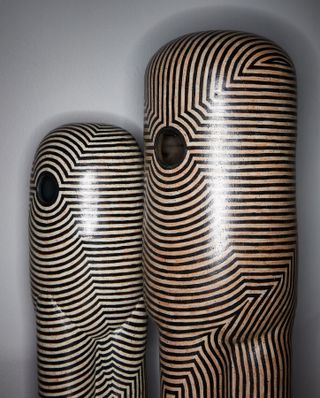
Above, Piccolo 33, titled ‘The Golden Boy’ in stoneware, 22 karat gold lustre. Below, Piccolo 14, made of stoneware with black and mint hand-painted stripes and Piccolo 19, made of stoneware with black and stone hand-painted stripes
While many of the pieces are made out of stoneware, which has been left unglazed to allow the natural tones and grog of the clay to shine through, Anderson has also ventured into making vessels out of raw porcelain, as well as coating other pieces entirely in a brilliant 22-karat gold lustre. Viewed alongside pieces that display the painted line work, which is occasionally reminiscent of wood grain and millwork, one can’t help but make connections between Anderson's artful ceramics and Hendifar's refined design work for Apparatus.
Wallpaper* Newsletter
Receive our daily digest of inspiration, escapism and design stories from around the world direct to your inbox.
I love the idea of respecting the tradition of ceramics and the piece actually being a vessel that can hold water and can be used
The exhibition, ‘The Piccolo Parade’, is being staged in Apparatus’ otherworldly New York showroom space. Featuring 30 different pieces of different scales, these are installed in a horseshoe-like configuration, inviting each visitor in to experience them intimately, much like Anderson does when he works on them in his studio in Rhinebeck, New York.
He muses, ‘Personally, from what I see going on in ceramics where it’s a lot of more on more on more, there’s something really nice about just thinking about symmetry and form with a level of control in the decoration that doesn’t feel contrived, or overthought or overworked. I still wanted there to be an element of play with it all.’

Vessel 06, made of stoneware with grey and stone hand-painted stripes and fins, glaze

A trio of stoneware Piccolos with hand-painted stripes

Piccolo 34, made of porcelain

Jeremy Anderson with Piccolo 23, made of stoneware with black and stone hand-painted stripes
INFORMATION
‘The Piccolo Parade’ is on view 13 – 31 March at Apparatus
ADDRESS
124 West 30th Street
Floor 4, New York
NY 10001
Pei-Ru Keh is a former US Editor at Wallpaper*. Born and raised in Singapore, she has been a New Yorker since 2013. Pei-Ru held various titles at Wallpaper* between 2007 and 2023. She reports on design, tech, art, architecture, fashion, beauty and lifestyle happenings in the United States, both in print and digitally. Pei-Ru took a key role in championing diversity and representation within Wallpaper's content pillars, actively seeking out stories that reflect a wide range of perspectives. She lives in Brooklyn with her husband and two children, and is currently learning how to drive.
-
 10 books culture editor Hannah Silver recommends this winter
10 books culture editor Hannah Silver recommends this winterLacking inspiration over what to read next? Wallpaper* culture editor, Hannah Silver, shares her favourite books
By Hannah Silver Published
-
 Midtown Manhattan restaurant Ánimo! takes its cues from Mexican morning rituals
Midtown Manhattan restaurant Ánimo! takes its cues from Mexican morning ritualsDesigner Jordana Maisie creates a minimalistic yet referential setting for Ánimo!
By Adrian Madlener Published
-
 First look: Leica Cine Play 1 brings premium style and tech to the world of home cinema
First look: Leica Cine Play 1 brings premium style and tech to the world of home cinemaLeica compresses its meticulous optic know-how into the ultra-compact Cine Play 1 4K projector
By Jonathan Bell Published
-
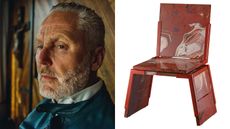 Italian designer Enrico Marone Cinzano fuses natural perfection with industrial imperfection
Italian designer Enrico Marone Cinzano fuses natural perfection with industrial imperfectionEnrico Marone Cinzano's first solo show at New York’s Friedman Benda gallery debuts collectible furniture designs that marry organic materials with upcycled industrial components
By Adrian Madlener Published
-
 One to Watch: Brooklyn studio Outgoing gives new meaning to the idea of world building
One to Watch: Brooklyn studio Outgoing gives new meaning to the idea of world buildingLife and creative partners Brett Gui Xin and Del Hardin Hoyle from Outgoing blur the lines between craft and concept in experimental designs that have the potential for greater application
By Adrian Madlener Published
-
 Discover the alchemy of American artists Philip and Kelvin LaVerne
Discover the alchemy of American artists Philip and Kelvin LaVerneThe work of Philip and Kelvin LaVerne, prized by collectors of 20th-century American art, is the subject of a new book by gallerist Evan Lobel; he tells us more
By Léa Teuscher Published
-
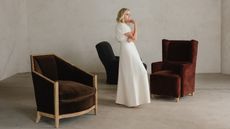 Sarah Solis’ first furniture collection is an homage to art deco
Sarah Solis’ first furniture collection is an homage to art deco‘Is it weird to call furniture sexy?’ Los Angeles-based designer Sarah Solis discusses her debut furniture line and new brand and store, Galerie Solis
By Dan Howarth Published
-
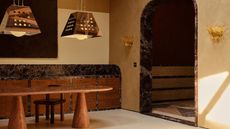 Three sleek new design showrooms you need to see in Los Angeles
Three sleek new design showrooms you need to see in Los AngelesThree international design showrooms have started a retail design boom in Los Angeles. Here are the stores to put on your radar
By Carole Dixon Published
-
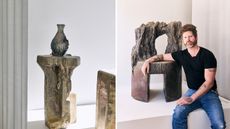 One to watch: Casey Zablocki’s Rocky Mountain surroundings feed into his vast sculptural work
One to watch: Casey Zablocki’s Rocky Mountain surroundings feed into his vast sculptural workMontana-based artist Casey Zablocki uses one of America’s largest kilns to create monumental ceramic, functional sculptures
By Dan Howarth Published
-
 This remodelled San Francisco family home by MEMarchitecture and Studio Volpe is a masterpiece of soothing modernity
This remodelled San Francisco family home by MEMarchitecture and Studio Volpe is a masterpiece of soothing modernityA sensitive and coherent approach by the San Francisco-based architects and designers has resulted in a home of tactile beauty, character and comfort
By Shonquis Moreno Published
-
 First Look: a domestic idyll by Lucy Stark and Fabien Cappello at the Blunk Space
First Look: a domestic idyll by Lucy Stark and Fabien Cappello at the Blunk SpaceInspired by the life and times at JB Blunk's haven of a house in Inverness, a new exhibition of paintings and objects has us dreaming of California
By Hugo Macdonald Published